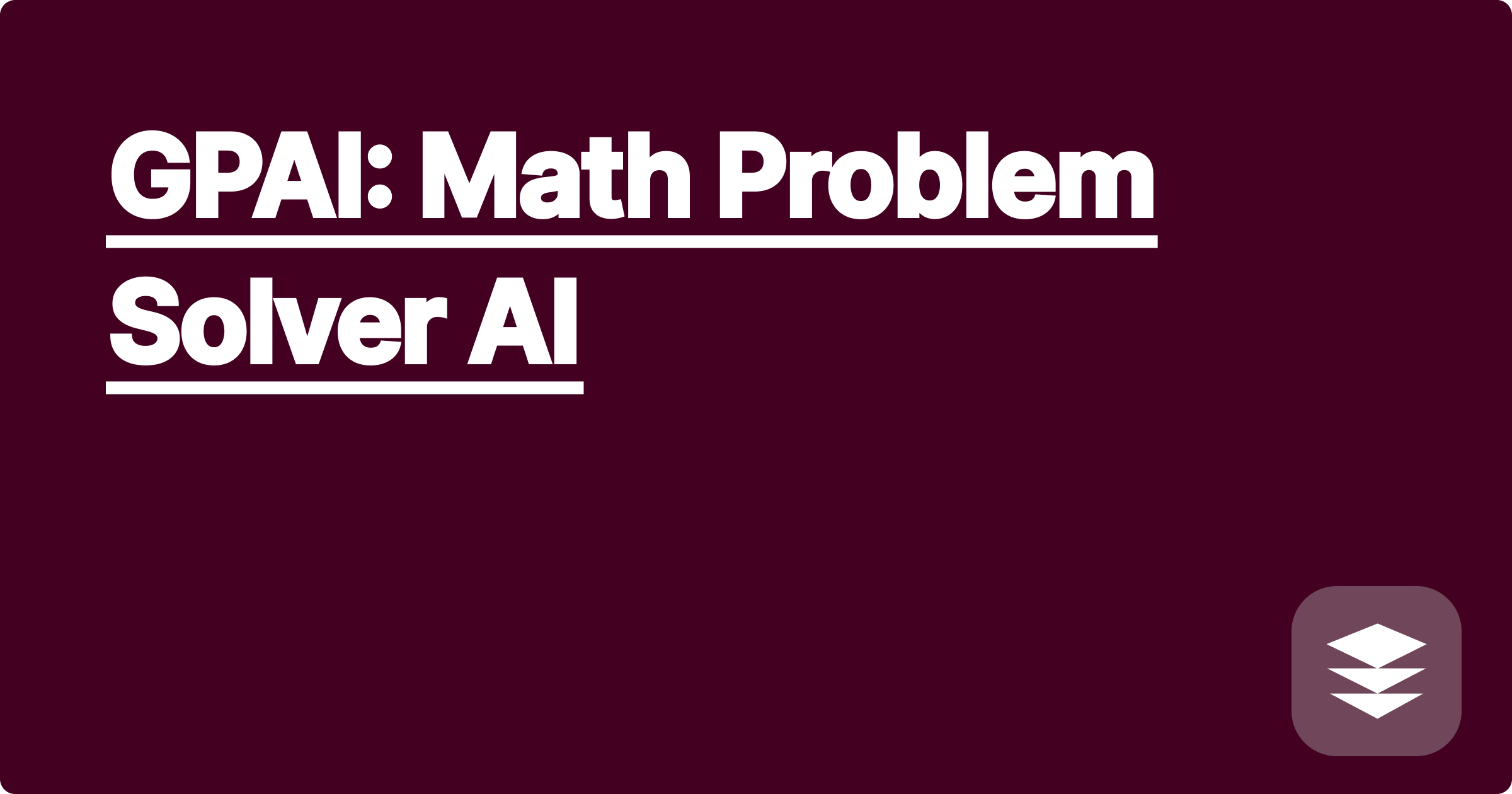
The world of STEM is undeniably challenging. From deciphering complex mathematical equations to wrangling massive datasets, the academic journey for STEM students and researchers is often a steep uphill climb. But what if you could harness the power of artificial intelligence to transform this climb into a more manageable ascent? Imagine having a personalized tutor available 24/7, ready to guide you through intricate problems and unlock your full academic potential. This is the promise of AI-powered learning platforms, and in this blog post, we'll explore how these tools, particularly focusing on the hypothetical "GPAI" platform, can revolutionize your STEM learning experience.
For STEM students and researchers, particularly those in their second and third years of undergraduate study or navigating the complexities of graduate school, the pressure to excel can be immense. Balancing coursework, research projects, and other commitments often leaves little room for deep dives into particularly challenging concepts. This is where AI tools can become invaluable allies. They can provide personalized support, identify areas where you need to focus your efforts, and ultimately help you achieve academic success more efficiently. This isn't about replacing hard work, but rather about working smarter, leveraging the power of AI to optimize your learning journey.
STEM fields often require grappling with complex mathematical problems, ranging from calculus and linear algebra to differential equations and statistics. These problems can be time-consuming and frustrating, especially when resources are limited or when a specific concept proves particularly difficult to grasp. Traditional learning methods often involve struggling through textbooks, attending lectures, and seeking help during limited office hours. While these methods have their merits, they may not cater to individual learning styles or provide the immediate feedback needed to overcome specific hurdles. This can lead to a sense of being overwhelmed, potentially hindering progress and impacting overall academic performance. Furthermore, the sheer volume of material covered in STEM courses can make it difficult to identify and address individual weaknesses effectively.
Imagine having access to a personalized AI tutor like GPAI. This hypothetical platform, and others like it, can offer a range of features designed to enhance your learning experience. GPAI can analyze your strengths and weaknesses based on your performance on practice problems, providing targeted recommendations for areas requiring further attention. It can generate personalized study plans, ensuring you focus your efforts on the most critical concepts. GPAI can even offer step-by-step solutions to complex problems, explaining the underlying logic and principles in a way that’s easy to understand. Beyond GPAI, other AI tools like Wolfram Alpha can be incredibly helpful for solving complex mathematical equations and exploring mathematical concepts. Tools like ChatGPT and Claude can be leveraged to explain difficult concepts in simpler terms, generate practice problems, and even help with brainstorming research ideas.
Let’s say you’re struggling with a particularly challenging integral in your calculus class. First, you can input the problem into GPAI. The platform then breaks down the solution process step-by-step, explaining the integration techniques used and highlighting potential pitfalls. If you're still stuck, you can use ChatGPT or Claude to request further clarification on a specific step or concept. You can even ask these tools to generate similar problems for practice, allowing you to solidify your understanding. For more complex mathematical computations or visualizations, Wolfram Alpha can be an invaluable resource. By combining these tools, you can create a powerful personalized learning ecosystem.
Consider a scenario where you need to analyze a large dataset for a research project. Traditionally, this might involve hours of manual data entry and analysis. However, AI-powered tools can automate much of this process. You can use Python libraries like Pandas and Scikit-learn, coupled with guidance from ChatGPT on how to structure your code, to quickly process and analyze your data. For example, you can ask ChatGPT to generate Python code for performing a specific statistical analysis, such as a regression analysis or a hypothesis test. This not only saves you time but also allows you to focus on interpreting the results and drawing meaningful conclusions. Similarly, if you are working on a physics problem involving complex equations of motion, you can use Wolfram Alpha to solve the equations and visualize the trajectory of the object.
Integrating AI tools into your workflow requires a strategic approach. First, identify your specific needs and learning style. Experiment with different AI tools to find the ones that best suit your preferences. Don’t be afraid to ask for help and explore online communities dedicated to AI in education. Next, develop a structured study plan. Use AI tools to identify your weaknesses and prioritize your learning goals. Set realistic targets and track your progress regularly. Remember that AI tools are meant to supplement, not replace, traditional learning methods. Attend lectures, engage in discussions, and actively participate in class. Finally, don’t be discouraged by setbacks. Learning is a continuous process, and it's okay to make mistakes. Use your mistakes as learning opportunities and leverage AI tools to identify areas where you need to focus your efforts.
In conclusion, AI has the potential to revolutionize the way we learn and conduct research in STEM fields. By embracing these powerful tools and integrating them strategically into our workflows, we can unlock new levels of efficiency and understanding. The journey through STEM may still be challenging, but with the assistance of AI, the climb becomes less daunting and the summit more attainable. Start exploring these tools today and discover how AI can empower you on your path to academic success. Don't hesitate to experiment with different platforms and find what works best for your individual learning style. The future of STEM learning is here, and it's powered by AI.